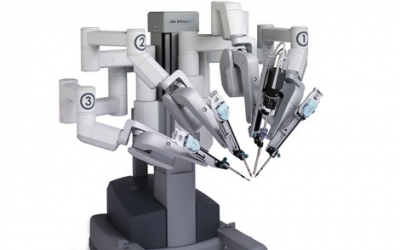- Latest news▼
-
12:16, April 19 Scientists grow human mini-lungs in lab

-
10:23, April 19 JAMA Oncology: Urine test can help rule out high-grade prostate cancer with almost 100% accuracy, study shows

-
18:00, April 18 Daily Mail: Elderly woman in China gets infected with brain-eating amoeba

-
14:19, April 18 Obesity: exercising before breakfast helps you lose weight faster

-
10:42, April 18 The Conversation: childhood trauma can cause pathological hoarding

-
08:37, April 18 Daily Mail: Satiating food reduces cravings for sweets, nutritionist says

-
18:22, April 17 First Armenian-German Conference entitled “Heart Failure Spring School”

-
08:38, April 17 Why do kids usually recover from COVID-19 more easily than adults?

-
14:37, April 16 Daily Mail: intermittent fasting is not suitable for children and women before their periods

-
16:41, April 15 Cell: in carriers of defective BRCA2 gene, sugar consumption increases cancer risk

-
15:04, April 15 305 cases of measles recorded in Armenia so far in 2024

-
14:38, April 15 Food and Environmental Virology: tea contributes to effective coronavirus control

-
12:41, April 15 Daily Mail: vitamin A, B3 and E supplements can be dangerous

-
10:56, April 15 Diabetes Care: evening physical activity is good for the heart

-
08:27, April 15 Women are more susceptible to blood loss and death during bypass surgery than men, researchers say

All materials
3 questions you may have about robot-assisted surgery

A robot performing surgery may sound futuristic, but it’s not really new.
Robot-assisted surgery uses a mechanical arm and wrist to mimic a surgeon’s movement while the surgeon’s hands control the movement and placement of surgical instruments, says Michael Gong, MD, a surgeon at Hillcrest Hospital.
Unlike traditional open surgery, robotic surgery requires only four to five small, button-hole-size incisions. Through these incisions, a surgeon uses a powerful, high-precision endoscope – a tiny camera – and specialized surgical instruments.
“Robot-assisted surgery provides surgeons with all of the clinical and technical capabilities of traditional open surgery while enabling them to operate through only a few tiny incisions,” Dr. Gong says.
Here are three questions you may have about robot-assisted surgery:
What are the benefits of robot-assisted surgery?
Patients can benefit from robot-assisted surgery — it allows surgeons to perform complex medical procedures with great precision using a minimally invasive approach.
Patient benefits include:
• It’s a less invasive procedure — typically the surgeon makes four to six small incisions instead of several long incisions
• Shorter hospital stay and time needed for recovery
• Significantly less pain
• Quicker return to work and normal activities
• Decreased blood loss in some procedures
• Less scarring
Are all patients good candidates for robot-assisted surgery?
“There are no specific criteria a patient must meet to be a candidate for robot-assisted surgery,” Dr. Gong says. “Almost all patients who are planning to have surgery qualify.”
Surgeons use robot-assisted technology in a number of minimally invasive procedures. These include kidney and cancer treatment, urological and gynecological conditions and general surgery.
What are the advantages for surgeons?
Robot-assisted surgery uses leading-edge technology to help physicians to better serve their patients. For surgeons, the advantages include:
• A high-definition computer monitor that offers physicians improved visualization, enhanced dexterity and greater precision during surgery.
• A surgical stapling device is part of the unit
• The physician sits down during the procedure, which results in less fatigue.
Follow NEWS.am Medicine on Facebook and Twitter
- Read also
- Event calendar
- Archive
- Most read
month
week
day
- WHO: Nigeria pioneers revolutionary meningitis vaccine 1185
- One-third of women experience menstruation-related migraines, most often during premenopause - study 1173
- Daily Mail: vitamin A, B3 and E supplements can be dangerous 1031
- Food and Environmental Virology: tea contributes to effective coronavirus control 1023
- Cell: in carriers of defective BRCA2 gene, sugar consumption increases cancer risk 996
- 305 cases of measles recorded in Armenia so far in 2024 988
- Women are more susceptible to blood loss and death during bypass surgery than men, researchers say 970
- Diabetes Care: evening physical activity is good for the heart 926
- Daily Mail: intermittent fasting is not suitable for children and women before their periods 806
- First Armenian-German Conference entitled “Heart Failure Spring School” 586
- Why do kids usually recover from COVID-19 more easily than adults? 474
- Obesity: exercising before breakfast helps you lose weight faster 474
- The Conversation: childhood trauma can cause pathological hoarding 470
- Daily Mail: Elderly woman in China gets infected with brain-eating amoeba 451
- Daily Mail: Satiating food reduces cravings for sweets, nutritionist says 448
- Find us on Facebook
- Poll









